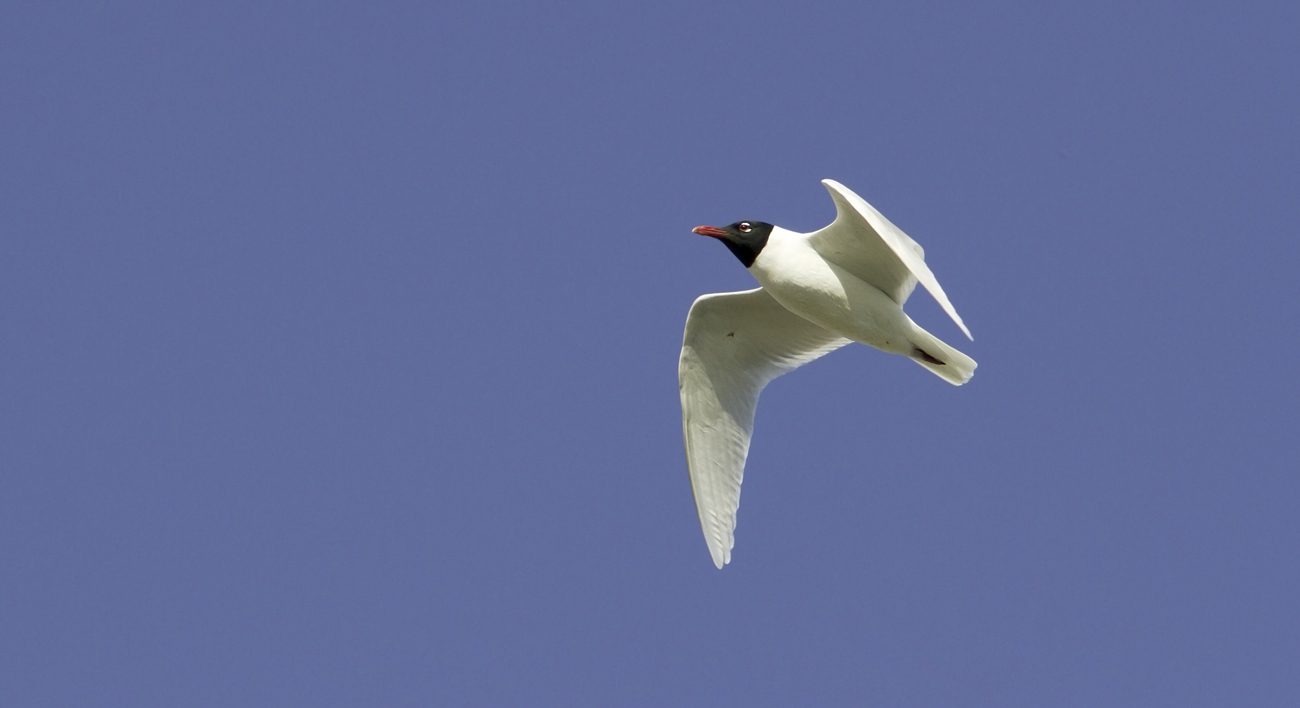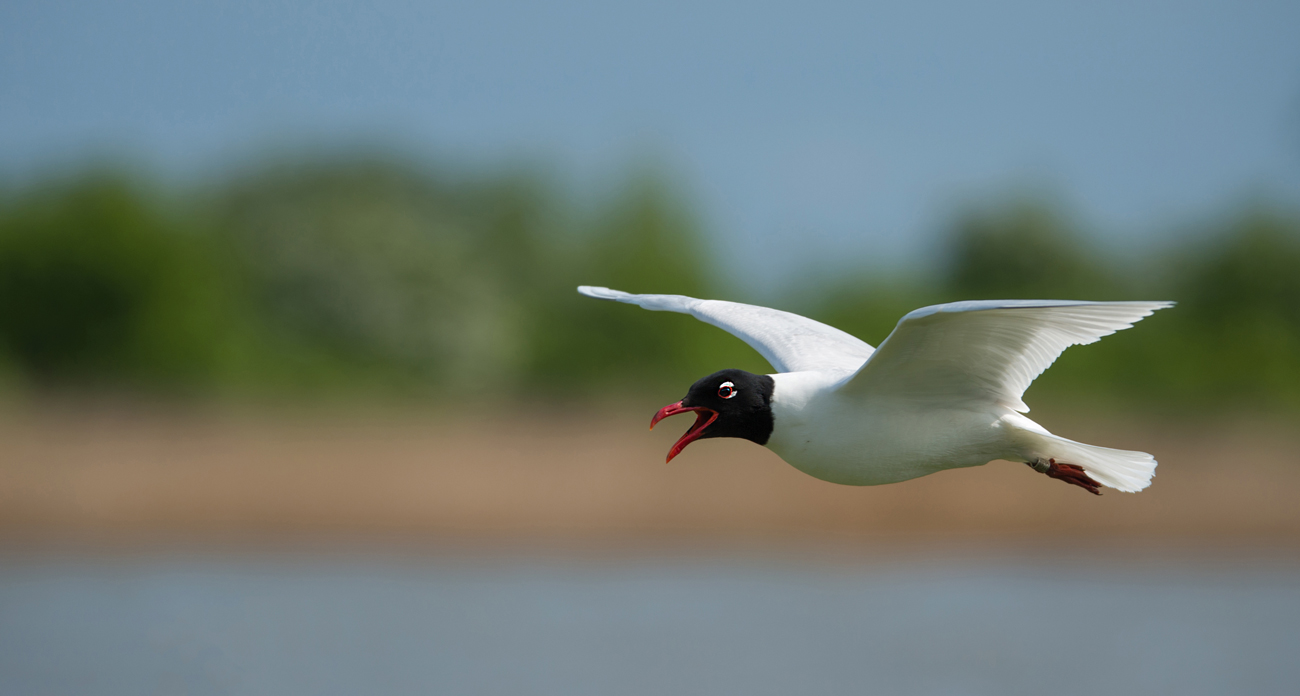
Mediterranean Gull (Larus melanocephalus)
With the arrival of August it should be holiday time in a nice hot place like Spain or Greece. But the pandemic has put paid to that.
We can only dream of blue skies for days on end, crystal-clear seas, and friendly little harbour restaurants serving the freshest and tastiest seafood imaginable. Like so many of us, I am missing the Med.
Fortunately though, lockdown served up an unexpected ‘feast’ which lifted my spirits during the early days of Covid-19 when we were only allowed out once a day to exercise.
The ‘Med’ came to me! In the form of Mediterranean Gulls, that is.
To my knowledge this is the first time any of this species has been recorded in the district of Cranleigh and Ewhurst.
It was sunny but cold with a northerly wind on Easter Monday and there was me indoors thinking what a rubbish way to spend a bank holiday when I could have been down the south coast doing a spot of birding.
Shortly before mid-day I heard what I thought was a cat calling. But as I looked up from my journal (British Birds – it had to be) I heard the call again, nearer this time, a loud two-syllable mewing sound – ‘yeaha’. And there they were. Two adult Mediterranean Gulls were battling against the wind as they headed north-east just above tree height alongside my garden.

Mediterranean Gull in flight
With the sun shining brightly on them the ‘Meds’ shone out like silver ghosts against the blue sky as they got nearer, calling all the time. Their jet-black hoods stood out and I was just in time to snatch up my binoculars and focus on their blood-red bills and white crescent marks above and below the eye.
They called once more and were swiftly gone in the direction of St Joseph’s Specialist School and College. No doubt they would be tracking through the gap in Winterfold’s Horseblock Hollow.
‘A very uplifting moment’, I wrote in my notebook, and was interested to hear later in the day that six more ‘Med’ Gulls had been seen in Pulborough, also coming from the south west. Some unusual migration was clearly underway.
I thought that would be it but ten days later I was doing my lockdown birding early morning stint in the garden and there had been a dramatic change in the weather. It was a hot, sunny day and the wind had died down.
At breakfast time I was treated to the sight of eight more Mediterranean Gulls passing over, again calling almost constantly. They were following the same route. It was as if the first two had left them an invisible map.
Birders in Beddington, north Surrey, had seen 10 the day before. According to my friend Ed, they were all part of a new Spring movement taking place in March and April, linked to a rapid population expansion.

‘Where’s my hoodie gone?’ A Mediterranean Gull in winter plumage
Adults, mainly, have been moving north to colonise new breeding grounds and fine days are especially favoured for these overland journeys. I happened to be around at just the right time.
I had waited many years to see a Mediterranean Gull around here and have often been to the Cranleigh Cricket Club pitch in winter in the hope of picking one out from among the usual, and slightly smaller, Black-headed Gulls.
The first Mediterranean Gull only visited Surrey in 1957 but since then there has been a gradual range expansion westwards from its breeding range on the north west Black Sea coast of Ukraine. It first bred in Britain in 1968 and from the mid-1980s I was beginning to see this one-time rarity on the nest in south coast gull colonies.
They have become regular sightings down at Pagham, West Sussex, and in Langstone Harbour, Hampshire, with a record 1,736 pairs nesting there two years ago – a 108% increase on the previous year.
It was from this direction that ‘my’ birds came so maybe it was a few of them who decided they would sooner find somewhere else to bring up the kids, well away from all those noisy, squabbling neighbours. If they were successful then I doubt they will be by themselves for long.
Next month: A flock of one of the highest-flying birds in the world, which can travel 7,000 miles in one go, give Cranleigh a (quick) visit . . .
Twitter – @Crane_Spotter
Click here to see all of Robin Stride’s previous Crane Spotters.











